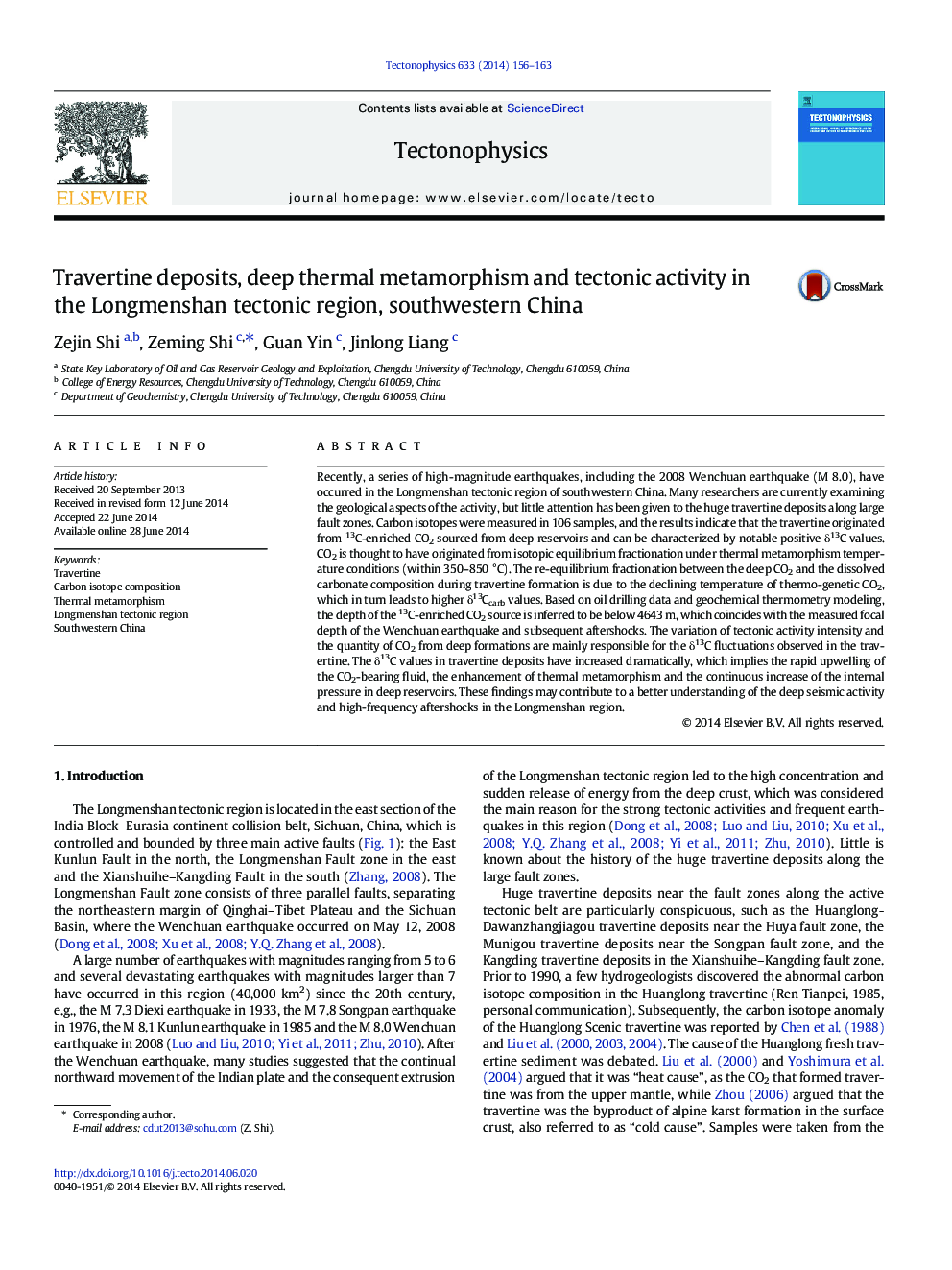| کد مقاله | کد نشریه | سال انتشار | مقاله انگلیسی | نسخه تمام متن |
|---|---|---|---|---|
| 6433805 | 1636758 | 2014 | 8 صفحه PDF | دانلود رایگان |

- The travertine is characterized by notable positive δ13C value in the study area.
- The de-carbonate reaction is a formation mechanism for the 13C-enriched CO2.
- The quantity of the CO2 has a close relationship with structure activity intensity.
- This finding may be of benefit to understanding the deep structure activity.
Recently, a series of high-magnitude earthquakes, including the 2008 Wenchuan earthquake (M 8.0), have occurred in the Longmenshan tectonic region of southwestern China. Many researchers are currently examining the geological aspects of the activity, but little attention has been given to the huge travertine deposits along large fault zones. Carbon isotopes were measured in 106 samples, and the results indicate that the travertine originated from 13C-enriched CO2 sourced from deep reservoirs and can be characterized by notable positive δ13C values. CO2 is thought to have originated from isotopic equilibrium fractionation under thermal metamorphism temperature conditions (within 350-850 °C). The re-equilibrium fractionation between the deep CO2 and the dissolved carbonate composition during travertine formation is due to the declining temperature of thermo-genetic CO2, which in turn leads to higher δ13Ccarb values. Based on oil drilling data and geochemical thermometry modeling, the depth of the 13C-enriched CO2 source is inferred to be below 4643 m, which coincides with the measured focal depth of the Wenchuan earthquake and subsequent aftershocks. The variation of tectonic activity intensity and the quantity of CO2 from deep formations are mainly responsible for the δ13C fluctuations observed in the travertine. The δ13C values in travertine deposits have increased dramatically, which implies the rapid upwelling of the CO2-bearing fluid, the enhancement of thermal metamorphism and the continuous increase of the internal pressure in deep reservoirs. These findings may contribute to a better understanding of the deep seismic activity and high-frequency aftershocks in the Longmenshan region.
Journal: Tectonophysics - Volume 633, 21 October 2014, Pages 156-163